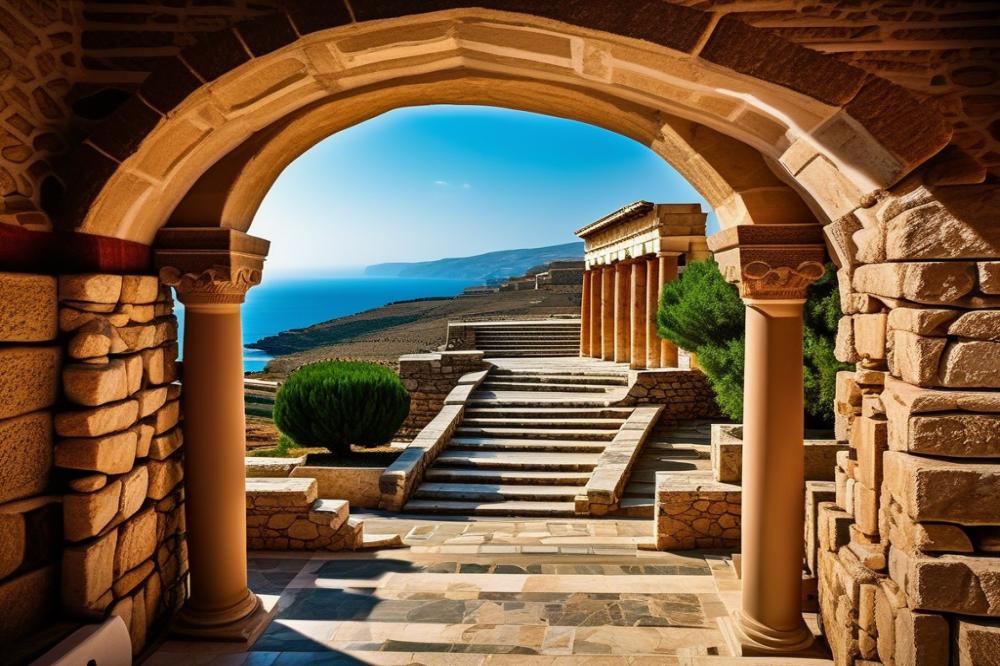Exploring the Heart of Crete
Crete is a gem in the Mediterranean, rich in history and culture. This island boasts a fascinating past that begins with the ancient Minoan civilization, which thrived over 4,000 years ago. Archaeological findings indicate that this society was advanced in art, trade, and architecture. Many artifacts reside in the island’s numerous museums, giving visitors a glimpse into a life filled with innovation and creativity.
Traveling through Crete allows one to experience the layers of this heritage. Interacting with the ancient ruins opens a portal to understanding how people lived, worked, and worshipped. Sites like Knossos reveal the intricate details of Minoan life, from their beautiful frescoes to the complex palace structures. Visitors walk the same paths once tread by an ancient civilization, creating a profound connection to the past.
In addition to its ancient roots, Crete showcases the architectural influences from the Venetians. After conquering the island in the late Middle Ages, the Venetians left behind stunning structures that blend beautifully with the remnants of earlier cultures. The changing styles reflect different eras, making the architecture a vital part of Cretan identity.
As one embarks on this Cultural Journey, the harmony between ancient and medieval can be felt everywhere. From bustling urban centers to quiet coastal villages, every corner of Crete tells a unique story. Observing these Historic Sites provides insight into the island’s enduring spirit, shaped by its diverse influences over centuries.
Ultimately, understanding the roots of Crete enhances our appreciation of its present. Through exploration, we gain a wider perspective on heritage. Crete invites travelers to delve into its past, enriching their experience in this beautiful Mediterranean haven.
Cultural Journey: Unveiling the Legacy of the Minoan Civilization
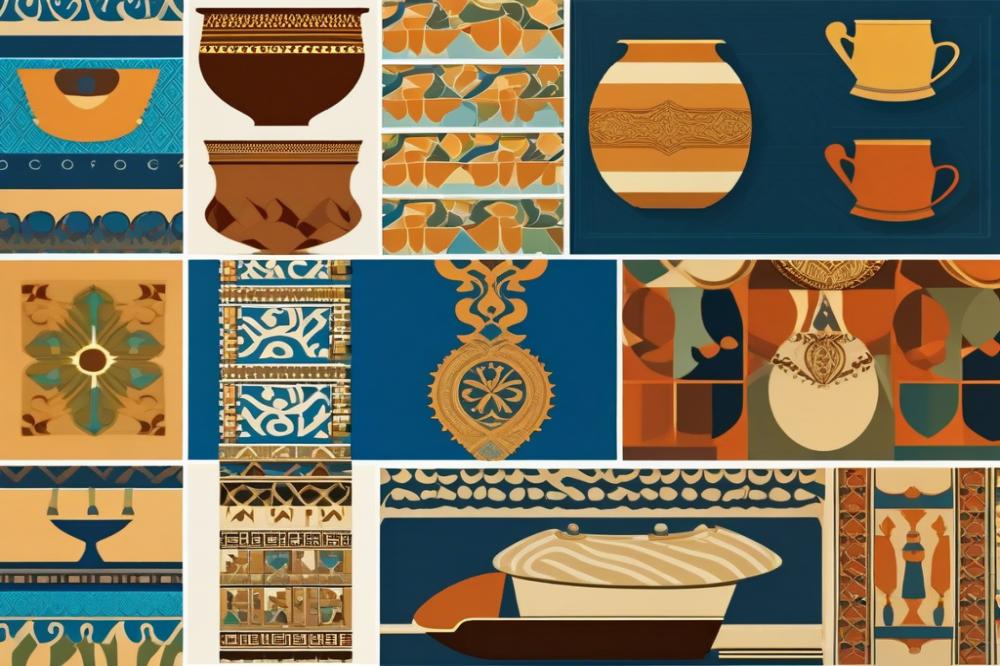
The Minoan civilization stands as one of the most fascinating chapters in the history of Crete. Flourishing around 3000 to 1100 BCE, this society made significant contributions to the Mediterranean world. Known for their advanced culture and innovative technologies, Minoans are often seen as pioneers of European civilization. Their legacy influences many aspects of Greek history and culture.
Key Archaeological Sites: Knossos and Phaistos
When exploring the ancient ruins, two sites stand out: Knossos and Phaistos. Knossos, the largest palace complex, is the centerpiece of Minoan heritage. It reveals the architectural brilliance of the time. Intricate designs and large-scale frescoes showcase the artistic talent of the Minoans. Nearby, Phaistos offers another glimpse into this society. Its impressive palace layout suggests a culture rich in trade and social organization. Both sites provide a tangible connection to a time long past.
Artistic Treasures: Minoan Frescoes and Pottery
Minoan frescoes are treasures that depict vibrant scenes of daily life and nature. The famous “Prince of the Lilies” fresco is just one excellent example. Such artwork captures the essence of their society. Equally important are the pottery pieces found at these sites. Crafted with precision, Minoan pottery varies in design and function. Some pieces served practical purposes, while others were likely used in rituals or as decorative items.
Traveling back in time through these artifacts unravels stories of an advanced society. The Minoans had a complex social structure, evident in their elaborate palaces. Museums across Crete house many findings from these archaeological sites. Visitors can observe how the Minoans influenced art, architecture, and trade in the region. Moreover, the Venetian architecture seen in towns like Chania highlights the island’s layered history.
Digging into the past reveals a world that thrived on innovation and connection. Minoans were not only traders but also artists and thinkers. This unique civilization created a legacy that continues to fascinate historians and travelers alike. Every artifact tells a story, bridging the gap between ancient and modern times. As one walks among the ruins, the echoes of the Minoans resonate, offering a profound understanding of Crete’s rich heritage.
Venetian Architecture: A Testament to History
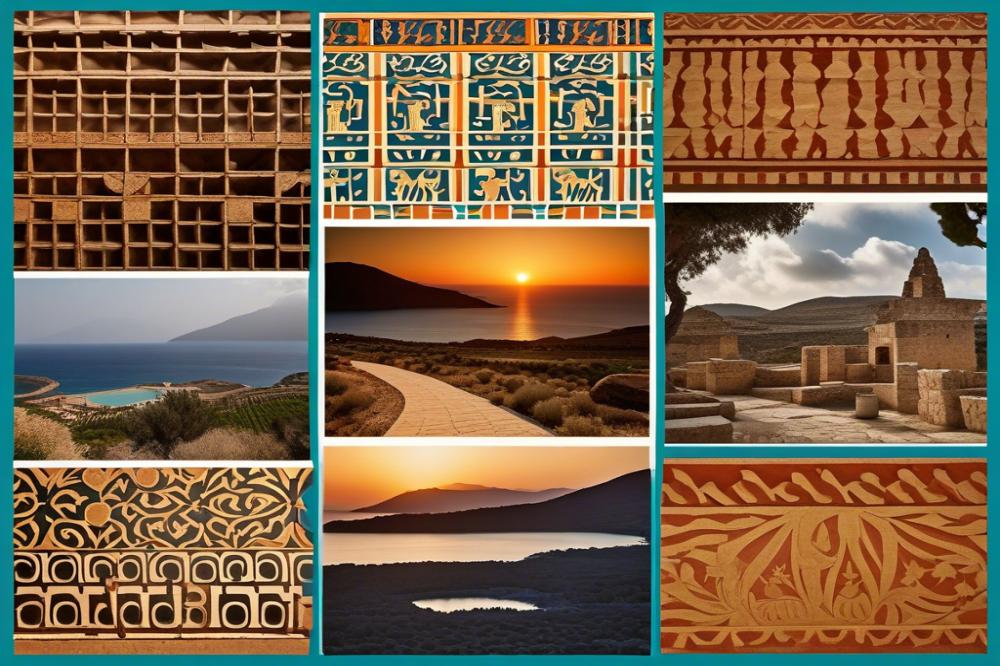
Crete’s architecture tells a fascinating story of its past. The Venetian influence is evident throughout the island. During the 13th to 17th centuries, Venice controlled large parts of Crete, and this left a lasting mark on its buildings. This period was crucial for the development of what we now recognize as unique Venetian architecture.
Three cities highlight this influence: Heraklion, Chania, and Rethymno. Each city boasts impressive structures that showcase the blend of Venetian styles with local traditions. In Heraklion, the Koules Fortress stands as a powerful symbol of defense. Built in the 16th century, it overlooks the harbor. Visitors often admire its robust walls and storied past.
Chania reveals even more about this architectural legacy. The Old Town features narrow alleys lined with old mansions. Many reflect the style favored by the Venetians, marked by arches and elaborate façades. The Venetian harbor is a focal point, where one can see the lighthouse that dates back to the Ottoman period but was originally built by the Venetians. This mix of influences creates rich layers of history for travelers.
Rethymno is another gem. The Fortezza Fortress dominates the skyline, showcasing military design typical of the period. Palaces and public buildings from the Venetian era can also be explored. Walking through this city feels like stepping back in time, where modern life coexists with echoes of the past.
Venetian architecture in Crete is not just about forts and houses. It represents a merging of cultures and influences. The heritage of the Minoan civilization adds depth to the archaeological landscape. The museums in these cities provide insights into how the past shaped today’s society. Ancient ruins alongside Venetian structures paint a complete picture of Crete’s evolution.
For those seeking to understand the island’s history, exploring its architecture is essential. It reveals how the Mediterranean culture has evolved over centuries. Travelers can appreciate how the unique blend of styles reflects the island’s diverse influences. Each building has its own story, waiting to be discovered.
Museums as Gateways to Heritage
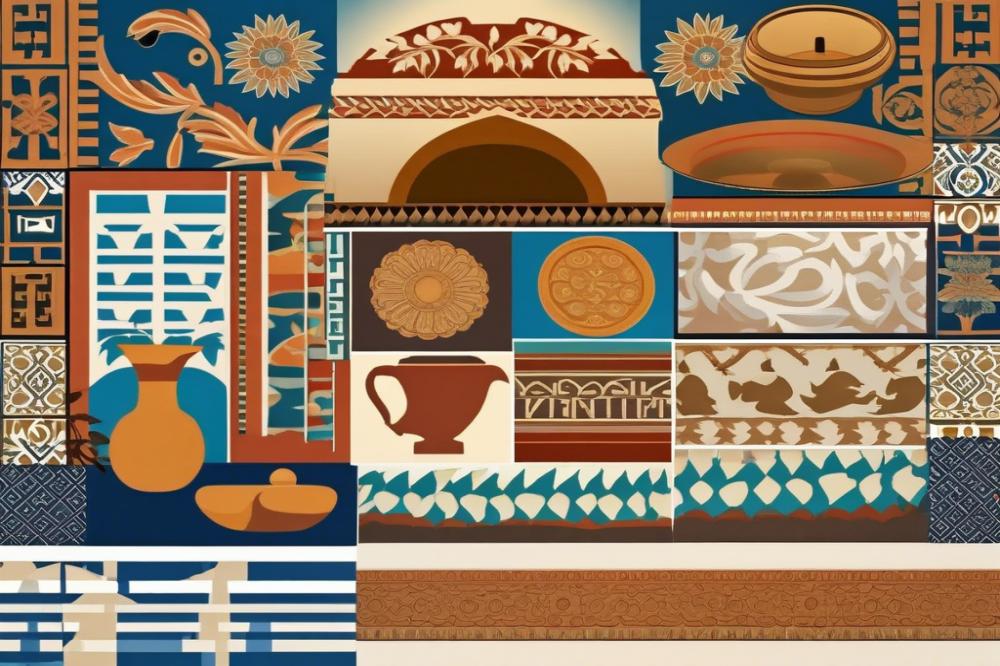
Cretans take pride in their rich history, evident in the island’s many museums. The Heraklion Archaeological Museum stands out as one of the most important. It houses a remarkable collection that showcases the achievements of the ancient Minoan civilization. Visitors can view artifacts that date back thousands of years. These include pottery, frescoes, and tools that reveal a great deal about daily life during that era.
Another noteworthy site is the Historical Museum of Crete. This museum delves into a broader narrative. It highlights not just ancient ruins but also spans the Byzantine and Venetian periods. Exhibits tell stories of struggles, triumphs, and the diverse influences that shaped modern Crete. The Venetian architecture displayed reflects the island’s multifaceted past.
Museums serve as vital resources for understanding Crete’s heritage. They preserve artifacts and knowledge that would otherwise fade into obscurity. Through education, these institutions play a crucial role in connecting people with the island’s storied past. With engaging exhibits, they spark curiosity about the region’s archaeological treasures and local history.
One exhibit may focus on Minoan art, showcasing intricate designs and vibrant colors. Another might discuss ancient traditions that continue to influence modern Cretan life. Travelers often find that learning about these elements deepens their appreciation for the Mediterranean culture on this enchanting island.
In essence, museums help bring history to life. They offer a glimpse into what life was like centuries ago. Each visit can reveal something new, making every trip to these venues an enriching experience. As gateways to the past, they keep the spirit of the island vibrant and alive.
Exploring Ancient Ruins: The Footprint of Time
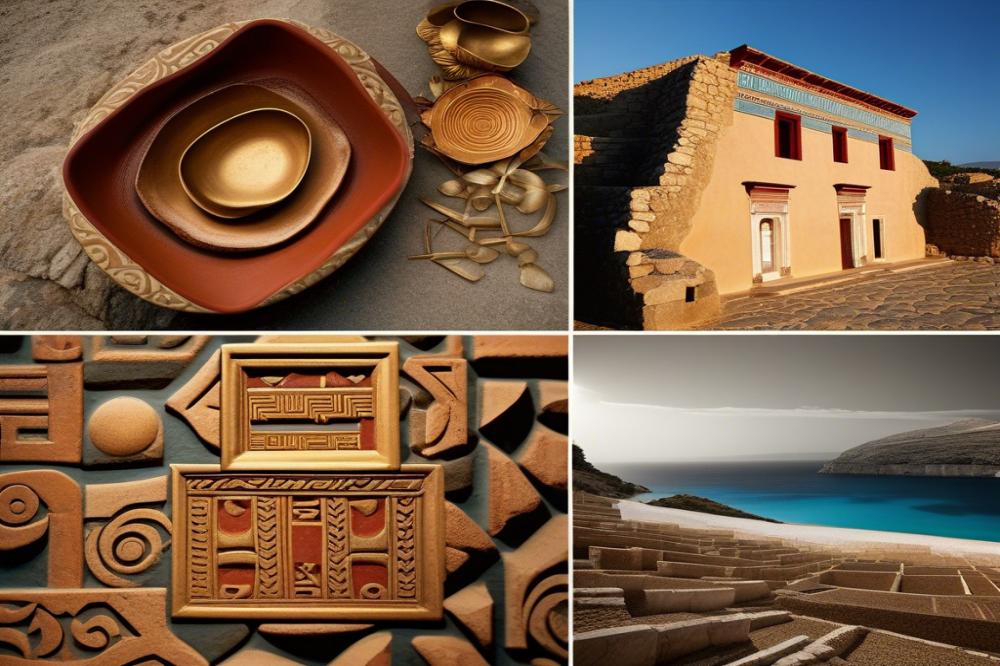
The island of Crete offers visitors a captivating glimpse into its rich past. A walk through ancient ruins reveals layers of history that shaped this Mediterranean gem. Gortyna, with its sprawling remains, is a site where you can witness the blend of different eras. The Roman theatre stands out, showcasing the skills of ancient architects. Nearby, the remnants of a significant Minoan civilization discovery can be found. This connection to the past provides insight into the lives of those who once thrived here.
Eleutherna is another site worth visiting. This ancient city has been largely unspoiled, maintaining its charm through the ages. Excavations have uncovered not only buildings but also pottery and inscriptions that tell stories of daily life and governance. The museum nearby holds treasures from these digs, allowing you to see artifacts that are as fascinating as the ruins themselves. Every item on display connects visitors to the island’s historic narrative.
Heritage here extends beyond just the ancient ruins. Crete’s history interweaves various influences, like Roman and Venetian architecture. Exploring these sites gives context to the island’s evolution over centuries. Beyond the stunning structures, a deeper understanding of the local culture emerges. Stories of resilience and change breathe life into the stones and walls you encounter.
Travel Tips for Visiting Ancient Locations
The Mediterranean Connection: Culture Through Travel
Crete occupies an important place in the vast tapestry of Mediterranean culture. The island has been a crossroads for many civilizations over millennia. Influences from different cultures have shaped its rich history. Trade, migration, and conquest played significant roles in Crete’s evolution.
Several ancient ruins dot the landscape, speaking to its storied past. The Minoan civilization, known as one of the earliest advanced societies in Europe, thrived here. Their impressive palaces, like those at Knossos, showcase sophisticated architecture and art. You can find remnants of Venetian architecture as well, reminders of the island’s more recent past. These structures blend beautifully with the surrounding natural beauty.
Impact of Trade and Migration
Trade routes across the Mediterranean brought various cultures to Crete. Merchants exchanged goods and ideas, enriching local life. This interaction resulted in a diverse heritage that reflects influences from Ancient Greece, Rome, and beyond. Every corner of the island tells a different story. archaeology unveils artifacts revealing the complexities of these historical connections.
Experiencing Local Culture
To truly connect with Crete, immerse yourself in its local traditions. Festivals throughout the year celebrate its vibrant culture and history. Many events feature traditional music and dance, drawing audiences into the rhythm of the island. Sample authentic cuisine that showcases age-old recipes. Local taverns serve fresh dishes made from ingredients sourced nearby.
Museums across Crete offer glimpses into its past. They hold collections that highlight the ancient Minoan civilization and its contributions to world culture. Visitors can explore the historical layers of the island, understanding how its past continues to influence the present. Many places actively invite travelers to participate in workshops. Learning about local crafts and traditions firsthand can deepen your appreciation of this unique land.
A Journey to Remember
Crete offers travelers a tapestry of rich history and vibrant culture. From ancient ruins to well-preserved palaces, every corner of the island reveals stories of the past. Exploring these Historic Sites lets visitors connect with the island’s heritage in a profound way. Each archaeological discovery adds a new layer to our understanding of human civilization. Witnessing the remnants of Minoan culture is truly captivating.
Diving into Crete’s past reveals the resilience and creativity of its people. Walking through the remains of Knossos, one can envision the grandeur of Minoan life thousands of years ago. The scents of local cuisine mingle with tales of ancient myths. They all come to life in the breathtaking landscapes that surround you. A blend of natural beauty and human achievement makes this island special.
Travelers are encouraged to explore beyond typical tourist paths. Seek local insights and stories that breathe life into the ancient stones. Engage with the communities, as they hold pieces of history that textbooks may overlook. Each interaction can enrich your understanding of this historic land. Ultimately, exploring Crete’s remarkable sites not only educates but evokes a sense of wonder.
Visiting Crete goes beyond sightseeing; it’s an invitation to experience the essence of history. The island’s beauty is not just in its landscapes but in the tales they tell. Every visit can create lasting memories filled with discovery and connection. Embrace the opportunity to step into the past while enjoying the present.
In embracing the past, you may just find parts of yourself. Traveling through Crete is more than a trip; it’s a deep dive into a culture that shaped civilization. Let each historic site inspire your journey. Leaving with a newfound appreciation for this unique destination ensures your travels will forever resonate.

